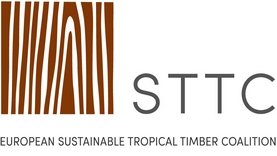Certified timber grows Belgian market share

Photo: Mark van Benthem, Probos
A new report shows a strong rise in certified timber’s share of the Belgian primary wood market between 2012 and 2016. At the same time, the study points to room for further improvement. It says more action is needed from industry and government to drive market share higher, notably in tropical timber and temperate hardwood. It also highlights questioning of the value of certification in the Belgian timber sector and a lack of transparency, which potentially hampers development of strategies to increase certified timber sales and thus support sustainable forest management.
“Certified timber on the Belgian market 2016” was jointly authored by the not for profit forest and timber sustainability analysts and advisors Bos+, Probos and Idea Consult and produced as part of the Timber sector agreement of 2011. It will be used in negotiations on a new sector agreement. The so called ‘source approach’ was used to conduct the study. This means that volumes of verified sustainable wood are determined as they enter the market. All importers and producers of primary timber products are consulted.
The report’s total of industry respondents gave it coverage of 42.8% of the Belgian primary wood market and of this 59.5% was certified. That compared with 40.5% in 2012. This broke down into 71.6% of the sawn softwood sector, 17.8% of sawn temperate hardwood, 25.8% of sawn tropical hardwood and 53.8% of sheet materials.
The report authors describe the upward trend in certified sales as a ‘positive’. However, given the urgent need to manage forestry more sustainably, with an area of tropical forest ten times the size of Belgium lost to a range of causes in just the last two years, it maintains that more needs to be done to accelerate certified market growth.
One obstacle is the ‘sceptical attitude about certified timber among importers and producers’. “They maintain that there is too little demand from customers and criticise the extra administrative costs certification involves,” states the report.
The government and industry, it adds, must also ensure that the next sectoral agreement to ‘expand the range and increase awareness of sustainable timber’ is stronger than the first in 2011, which was ‘not very ambitious’. “Sustained deforestation and forest degradation worldwide require a stronger commitment,” states the report. “The new sectoral agreement must be ambitious, with specific and measurable targets for the various product groups and accompanied by a facilitating policy.”
The government is also urged to devote more resources to enforcement of the EU Timber Regulation and steer procurement policy among public bodies more effectively. “Guidelines on the use of certified wood are unclear and not always followed up,” says the report.
It concludes that further improvements in Belgium’s public and private sector wood procurement can be made, pointing out that its neighbour the Netherlands achieved certified timber market share of over 83% in 2015.
The full report in Dutch, with a French summary and conclusions and recommendation, is available here: www.probos.nl/images/pdf/rapporten/Rap2018_Gecertificeerd_hout_op_de_Belgische_markt_in_2016.pdf



